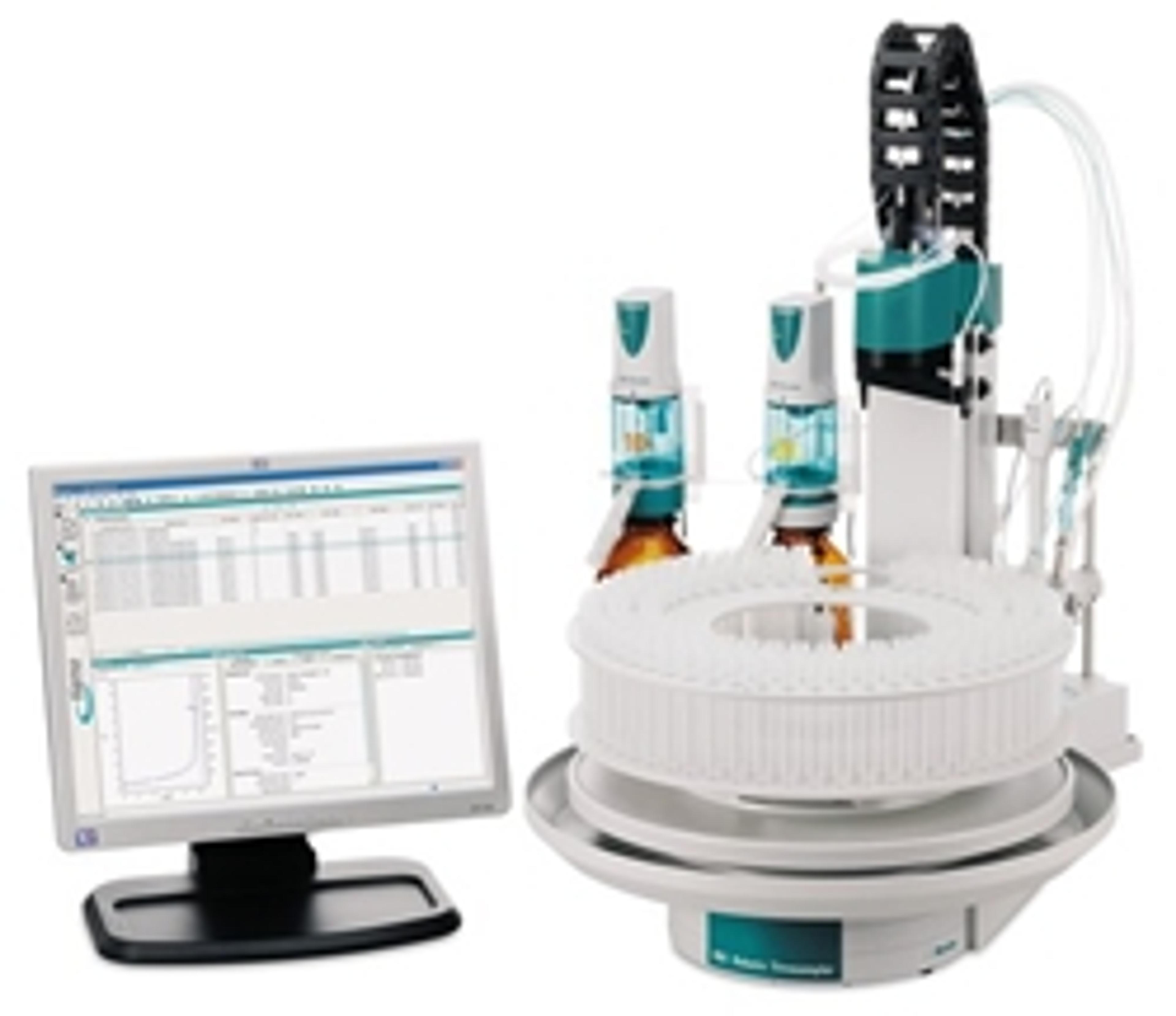High Throughput Automated Metal Purity Analysis Using the METROHM METROSENSOR SPECTROSENSE
28 Jan 2009With the new spectrosense electrode Metrohm UK can carry out high throughput metal analysis using photometric endpoint recognition.
Traditionally metals such as zinc (Zn) have been titrated using EDTA and observing a colour indicator change to signify the end-point (such as Xylenol Orange for Zinc). Masking agents to eliminate interfering metals and buffers are added to create the ideal testing conditions. This manual technique can be time consuming and results can vary between analysts. A technique to automate this would free up analysts’ time and eliminate any different results generated by different analysts.
Visual or photometric indication?
Visual indication with coloured indicators is certainly the oldest method for recognizing the endpoint of the titration; and is still frequently used today. It can be realized without any complicated instrumentation and at a low cost.
Coloured indicators react
• With the analyte: a small amount of indicator is added at the start of the titration and together with the analyte, forms species A. When the analyte has almost completely reacted with the titrant, the titrant displaces the indicator from species A which releases the indicator. This takes place with a change in colour.
• With the titrant: a small amount of indicator is added at the start of the titration. It does not react with the analyte, and the colour remains unchanged until the first excess titrant is present. The titrant combines with the indicator. This takes place with a change in colour.
If the correct indicator is chosen then good results are obtained. The chief disadvantage of this method is that it cannot be automated and can hardly be validated. (The colour sensitivity differs from person to person and also depends upon the lighting conditions. In addition, difficulties occur with coloured and/or turbid solutions).
Photometric indication can bring an improvement. The (individual) human eye is replaced by a (neutral) sensor. The method can be automated and validated – provided the correct colour indicator is chosen and that the solutions are not too turbid or no intense turbidity occurs during titration.
Coloured indicators do not have a transition point – they have a transition range. This fact can considerably influence the correctness of the results of titrations with visual endpoint recognition. An empirical rule is that the human eye recognizes a change in colour when the concentration ratio of the two indicator species changes from a ratio of e.g. 1/10 to 10/1. For pH indicators this means that the pH must have altered by two units (3).
The new Metrosensor Spectrosense allows you to benefit from the advantages of automated photometric titration in an optimal way. Depending on the application, you choose one of the two wavelengths available, 523 nm or 610 nm. Modern LEDs serve as the light source; they have an average operating time of 50 000 hours and their light intensity remains high even after long operating times.
Because the Spectrosense can be connected directly to a titrator and mounted on a sample processor Metrohm have made a high throughput version of this technique very simple. Individual sample racks can accommodate up to 100 samples and the system elegantly controlled by Tiamo™ controlling software.
The 855 Robotic Titrosampler is an automated titrator that combines the highest quality standards in titration – based on the Titrando technology – with top-performance automation. Its outstanding features are:
• 40 % less lab space
• Unique and outstanding
• Easy handling thanks to features like plug-and-play
Metrohm UK have automated Zn and Pb analysis using the Spectrosense. It was found that the Spectrosense technique became invaluable when it became obvious that for one particular sample the sample matrix affected the results when using an Ion Selective Electrode for titrations as there were other metals present that impacted on the results. However, the Spectrosense method enabled us to mirror the original manual analysis, using the prescribed masking solution and buffers whilst automating the analysis. The results obtained were highly reproducible.
Titration with photometric endpoint recognition is applied in a large number of titration methods. It can also used when:
• potentiometric endpoint indication is not possible
• no suitable potentiometric indicator electrode is available
• an official method prescribes photometric indication
• the electrode signal is disturbed by sample matrix effects
• one wishes to profit from the economical advantages offered by the photometric method compared to more expensive techniques, such as AAS or ICP-AES
• easy handling, quick and precise measurements are of prime importance
The new Spectrosense is not only outstandingly robust, it is also very easy to handle. It can be connected to a Titrino or Titrando like an ordinary electrode. Power is supplied from the stirrer connection of the Titrino or the MSB connection of the Titrando. If required, an external power adapter can also be used.
Picture shows Spectrosense photometric sensor.

